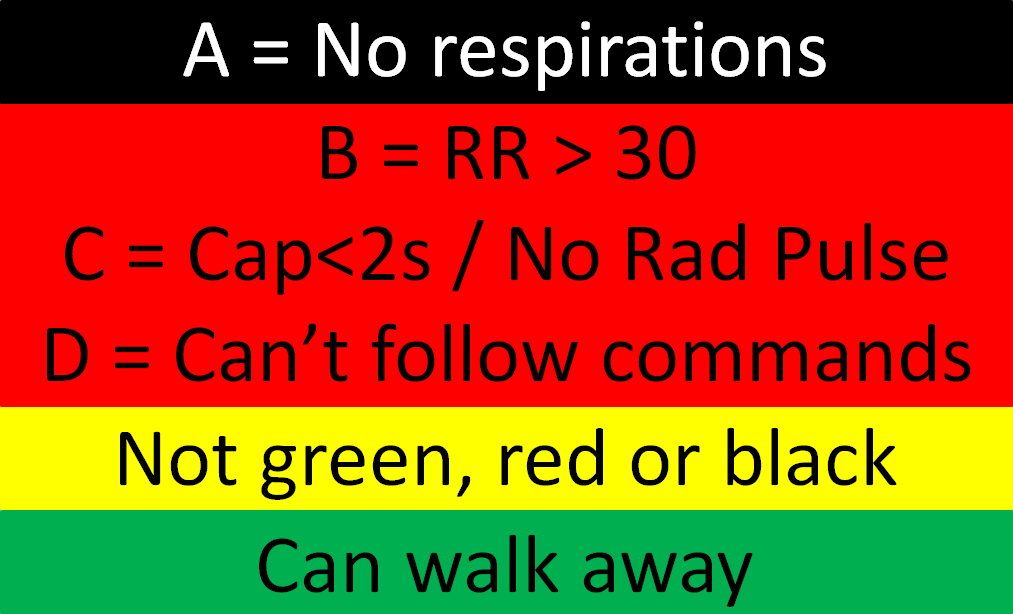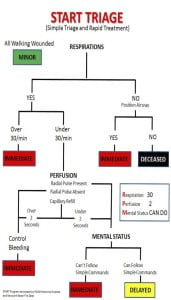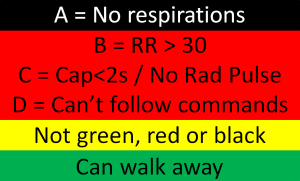My residency program discussed the EMS chapters in Rosen’s tonight and went over the START protocol for triage in mass casualty incidents.
For the unacquainted, START stands for Simple Triage And Rapid Treatment. This protocol aims to make triage extremely fast and simple to allow first responders to quickly assess large numbers of patients. Triaged patients are clearly marked with colors (black = dead, red = immediate attention, yellow = delayed attention, green = minor injuries).
As a mass casualty protocol may need to be taught to a large number of people quickly, it also needs to be intuitive. Unfortunately, in looking over the description in Rosen’s, I didn’t find that to be the case. Anyone that has read about this system in the past would have reviewed a flowchart that looks something like this:
Like some of the other Tiny Tips that I have/will publish, it is unlikely that emergency physicians will need to memorize this. However, it certainly could appear on a resident’s Board exam. My goal with the Tiny Tips is to find a way to remember things for these exams that I do not find intuitive. This flowchart definitely fit the bill.
A quick search found me the mnemonics 30-2-Can Do and RPM (Respirations, Perfusion, Mental Status) to help remember the criteria. This seems like a reasonable way to teach the system, but it didn’t stick with me very well. Instead, I decided to remember it by sticking with the absolute basics because the flowchart is really just the ABC’s complicated by arrows and colors. Here’s what my revised START flowchart looks like:
While this method of remembering the START triage system still requires memorization of some findings, I found that merging it with my regular assessment system (ABC!) was more intuitive than trying to remember an incomplete rhyme (30-2-Can Do) and relating those numbers to speed (RPM). Using the START protocol this way, the relationship between the criteria and the assessment of the ABC’s can be clearly seen.
This memory device, as well as the rest of the Tiny Tips, have been made into flashcards that can be downloaded and used as outlined on the Boring Cards page. Check them out!




